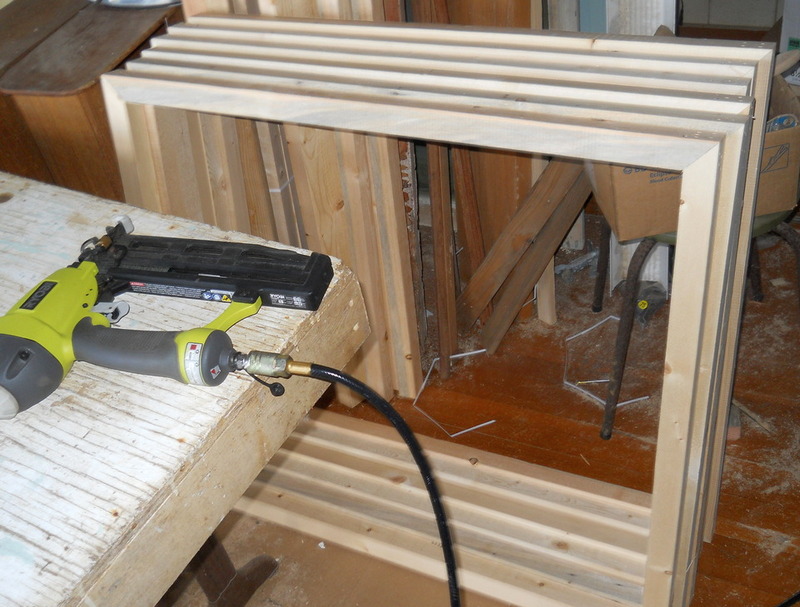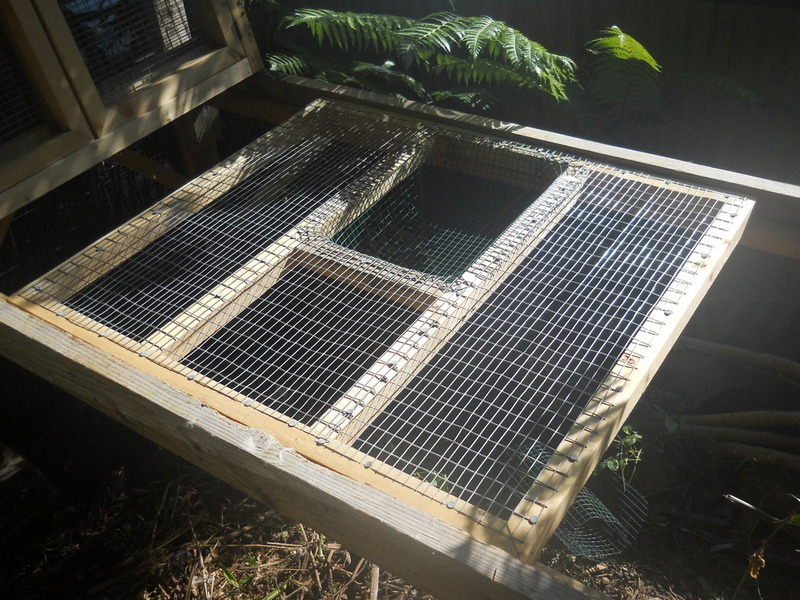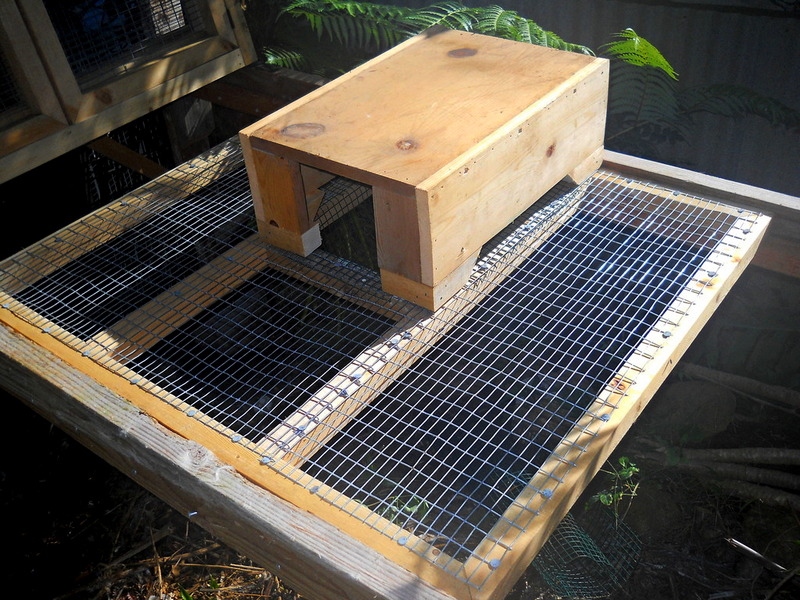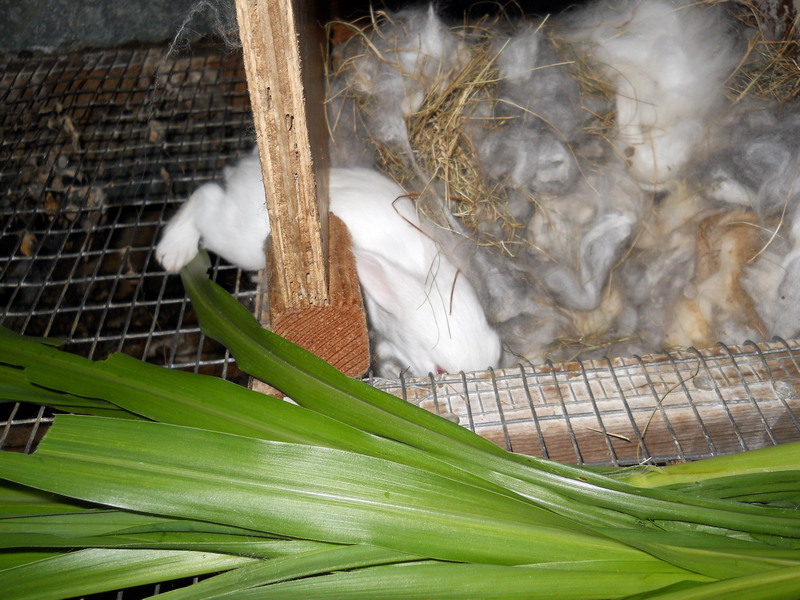The first rabbit hutch that we built had old refrigerator racks for the floor. That didn't work so well since on the young bunnies, their feet slipped through the wires and some of them ended up with broken legs. It might be the same for the 25mm x 25mm wires.
Also, on your hutch construction, the first thing that wears out is the wire floor. I've found that by building removable 'floor plates', it's easier to maintain the hutches.
There's a crossbar down the center of the regular floor plates to stiffen the floors a bit and a special dropped nesting plate is also made.
This is the special nesting plate, it has two supports instead of just one.
This is Hawaii so we don't worry about warmth, in a cold climate, there would probably be some sort of lining for the nest area.
The babies can easily get back in when they get out of the nest while they are young. We haven't lost any newborns to being out on the wire since these dropped nesting plates have been installed. Previously, with the traditional nest boxes, an occasional baby would get out of the nest box and be found later flat on the wire. Now, if they get out, they squirm around and fall back in.
There are matching 'door plates' made to match the floor plates so the whole hutch is 'modular'.
Those are set into a rack with the permanently mounted roof, back and sides to create a hutch. The nail in the bottom corner of the set of doors in back are what lock the doors shut. It's just a nail that drops through the individual door frame into the frame around the set of doors. Making the hole the nail drops into slightly larger is good, and putting the nail through a small bit of wood makes it easier to grab the top of the nail. Nailing them through a bit of scrap wood and then cutting them apart with a table saw works for the nailed knobs. Otherwise the wood splits, although you can also pre-drill them. We have a chop saw and a drill press as well as a nail gun, makes building bunny hutches so much easier.
The door and floor plates are all the same size and interchangeable so when something is wrong with one, it can just be replaced with the spare floor or door plate without having to move the bunnies out of their hutch for repairs.
The doe hutch under construction. Refrigerator racks are used for the permanent walls since bunny feet won't get trapped when the racks are used for walls and the wire diameter of refrigerator racks is thicker and will last longer. We can also get refrigerator racks for free, so that saves money. If I were making another hutch like this one, it could use a support in the middle of the span since it's about ten feet long with only a 2x4 across the front to hold the hutch floor and the floor sags a bit. Hmm, a 2x6 could be used instead. The back has the permanent walls there so there's more support there. This hutch has the doe herd in a colony of about ten on each layer of the hutch. The buck hutch is similar but segmented into six separate spaces.
Doors removed for cleaning and space reconfiguration. There's wall panels that fit between the door panels so the spaces can be sized according to the herd.
But, back to finding the right wire size, one consideration at a time. It's just that it's a lot easier to build for easy maintenance from the beginning instead of after it's been built.


































































